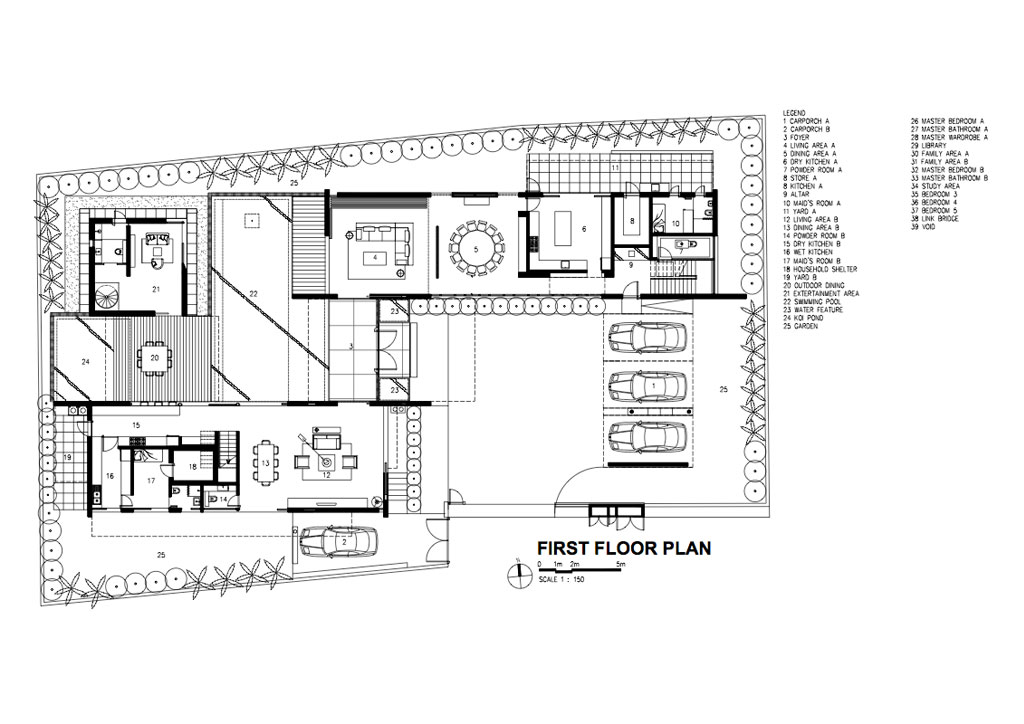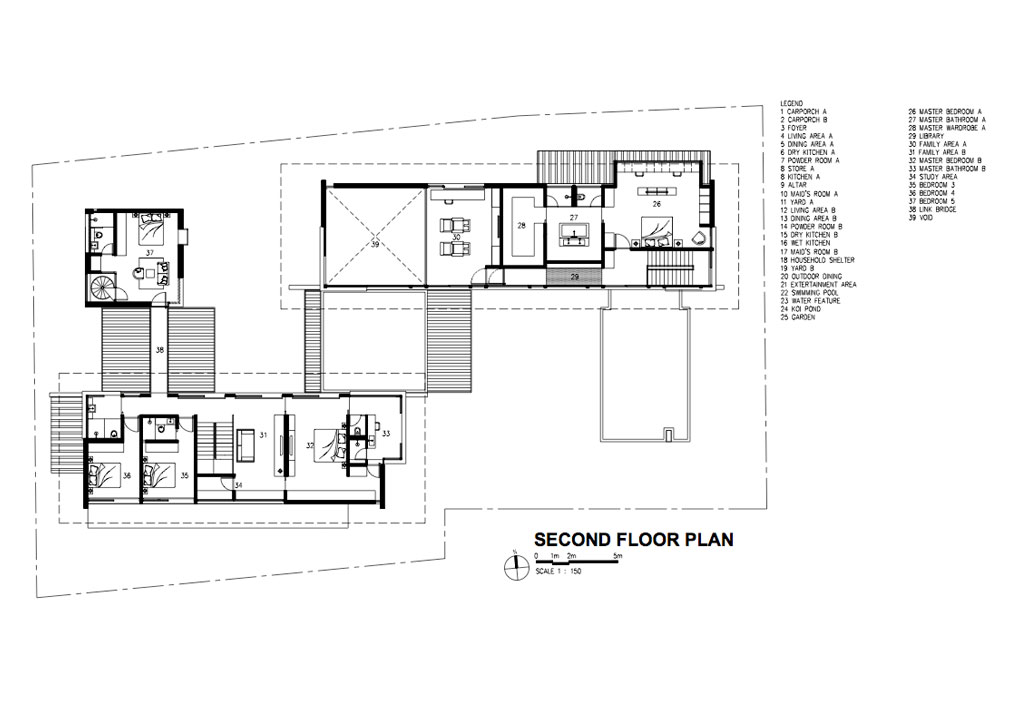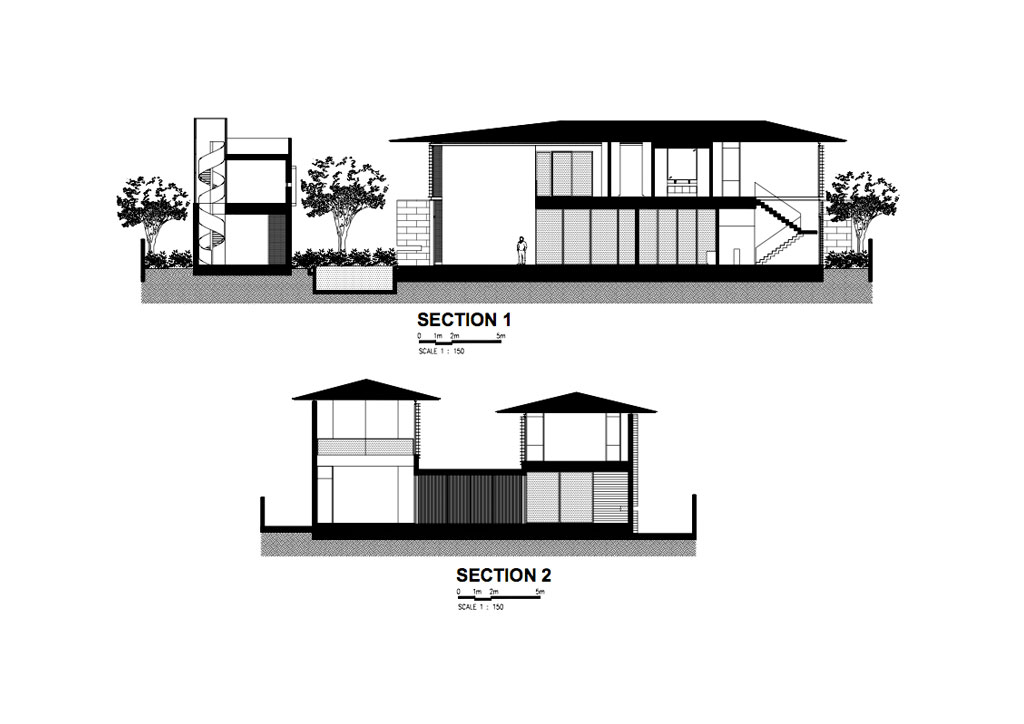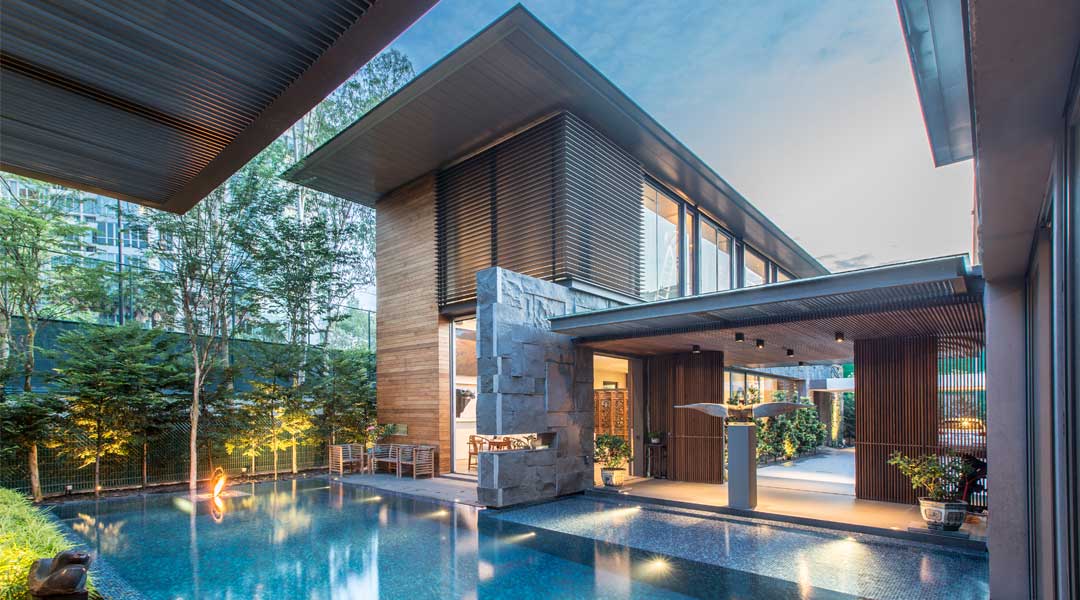
RT+Q three-block family house interlinked by art and architecture
“Core values” is a term commonly heard from Fortune 500 companies with thousands of employees. Often, these ‘values’ are ambiguous words and phrases with a loose, abstract, or even bizarre relationship with what the company actually does.
Since 2003, RT+Q, an architectural firm with no more than 30 staff in their studio have been guided by their own set of architectural core values and in doing so, have emerged as one of Sinagpore’s pre-eminent architectural design houses. Since their establishment, their works have quickly become a fixture in Singapore and Southeast Asia’s architectural publications with an early focus on modern single family homes in Singapore.
Fast forward to 2016, RT+Q has now become a regional practice with works in Singapore, Malaysia, and Indonesia (among others) and a much broader range of building typologies.
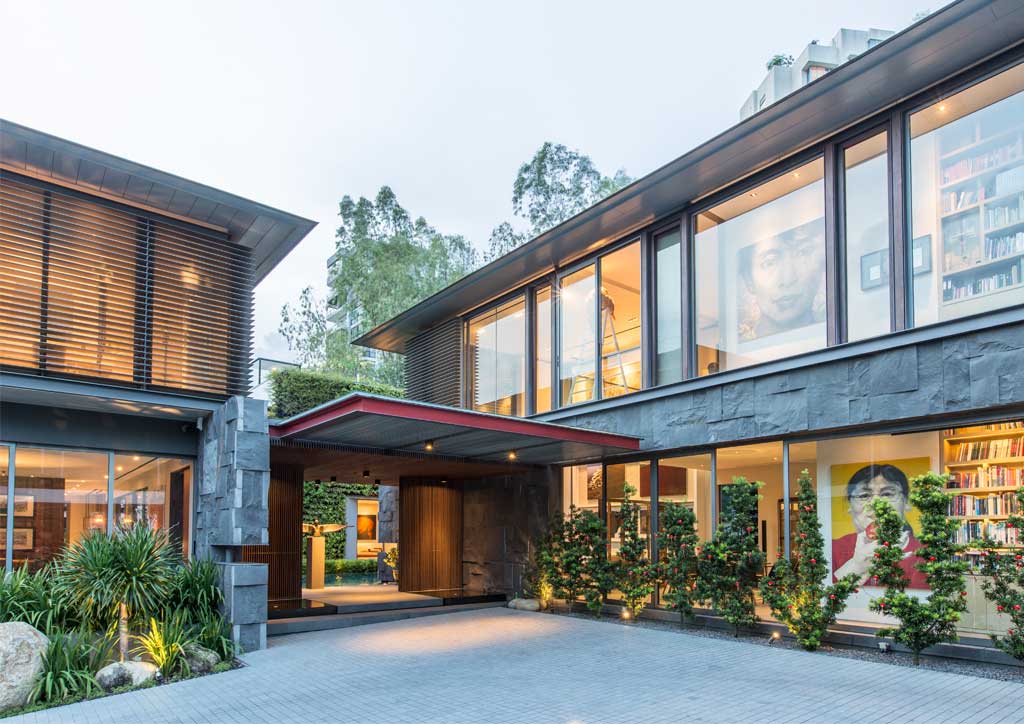
A counterintuitive approach
Partly to blow off steam, partly for team-building, but primarily for soul searching, since 2013, the firm began the practice of embarking on annual architectural pilgrimages. They have taken thier staff to the quarries of Spain and Portugal (2013), to the works of Palladio and Scarpa in Italy (2014), Le Corbusier’s in France (2015), and most recently to India (2016) for Le Corbusier’s latter works and the country’s temples, palaces, and stepwells.
According to Rene Tan and TK Quek, whose initials make up RT+Q, they do this to keep in touch with, refine, re-examine, and redefine the three core values of their work: scale + proportion, materials, and what they have come to call “a counter intuitive approach.” Of the three, easily the most intriguing and unique is the last: counter intuition—the quest to provide an element of surprise, to do the unexpected. The result is an element of curiosity, delight, and even fun that have since defined the work of RT+Q.
READ MORE: Shophouse by RT+Q becomes urban street lantern at night


The family as a determinant of scale
In 2015, design work was started on a house with a simple objective: to bring back a family together. The owner, an architect, was looking not just to build for himself, but also to get his son (also an architect) and his young family to move back in. He also wanted to ensure that his other son, based overseas, had a home base in Singapore for the holidays.
True to RT+Q’s core values, the solution was not to build a single, large house screaming for attention, but a series of elegantly-proportioned and interlinked pavilion-like blocks to cater to each ‘unit’ of the family: one for the patriarch and his wife (Block A), another for his son and young family (Block B) and a smaller, guest-cum-pool house for his overseas-based son (Block C). This allowed each house to cater to the specific needs of each family, allowing them privacy as needed, whilst still successfully bringing them together.
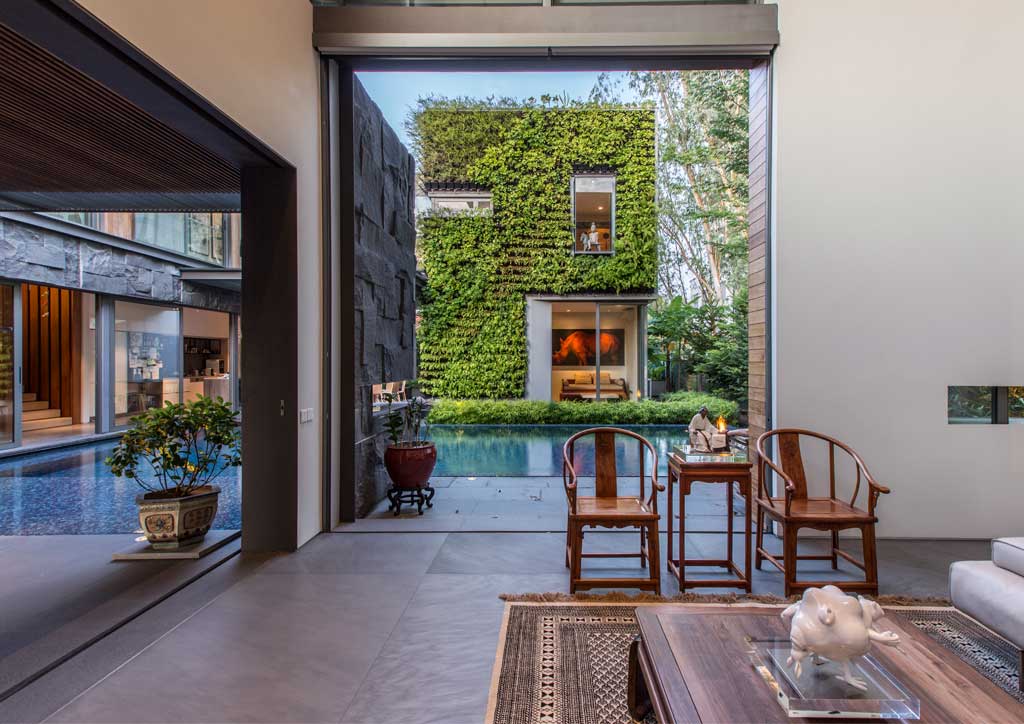
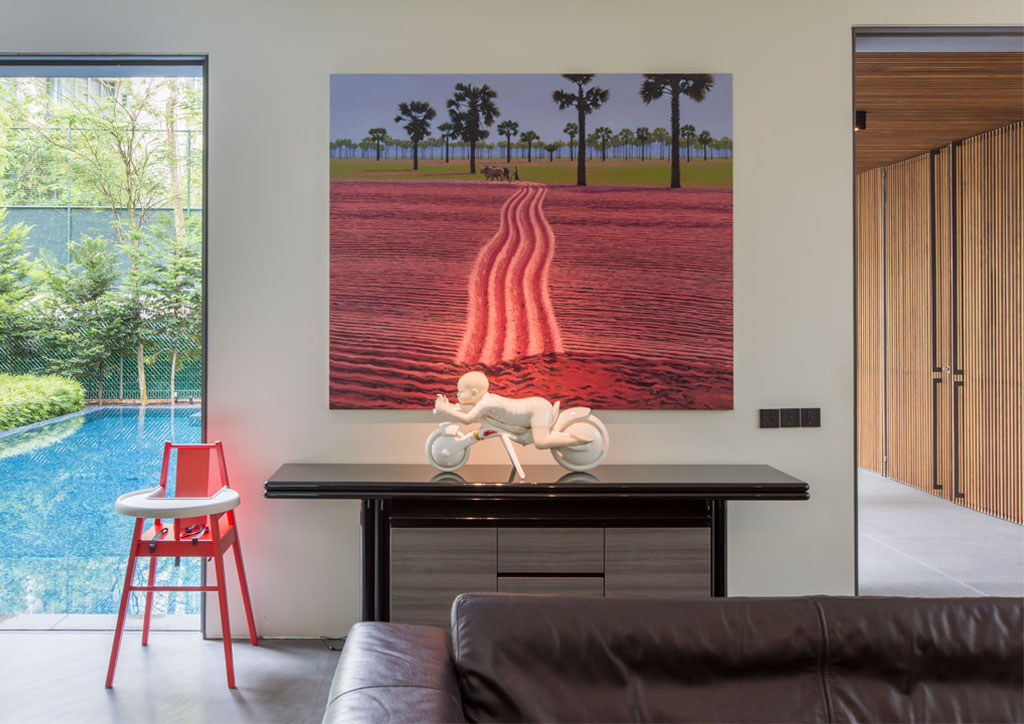
Counter intuition at work
In many ways, the site plan is a demonstration of RT+Q’s counter-intuitive approach: located next to a high-rise condominium (abutting the northern boundary of the site), the expected approach would have been to push the house as far away from the condominium as possible, whilst placing as many barriers, visual or otherwise, from the house’s high-density next door neighbor.
After an analysis of the condominium’s layout, RT+Q instead does the opposite: Block A is instead pushed right next to the condominium plot to the site’s north eastern edge, allowing the owner to enjoy unobstructed views to its swimming pool. “Their landscape is now my landscape!” the owner jokingly but proudly said as he showed off the view to the next door condominium’s resort-style pool deck from his bedroom’s private study.
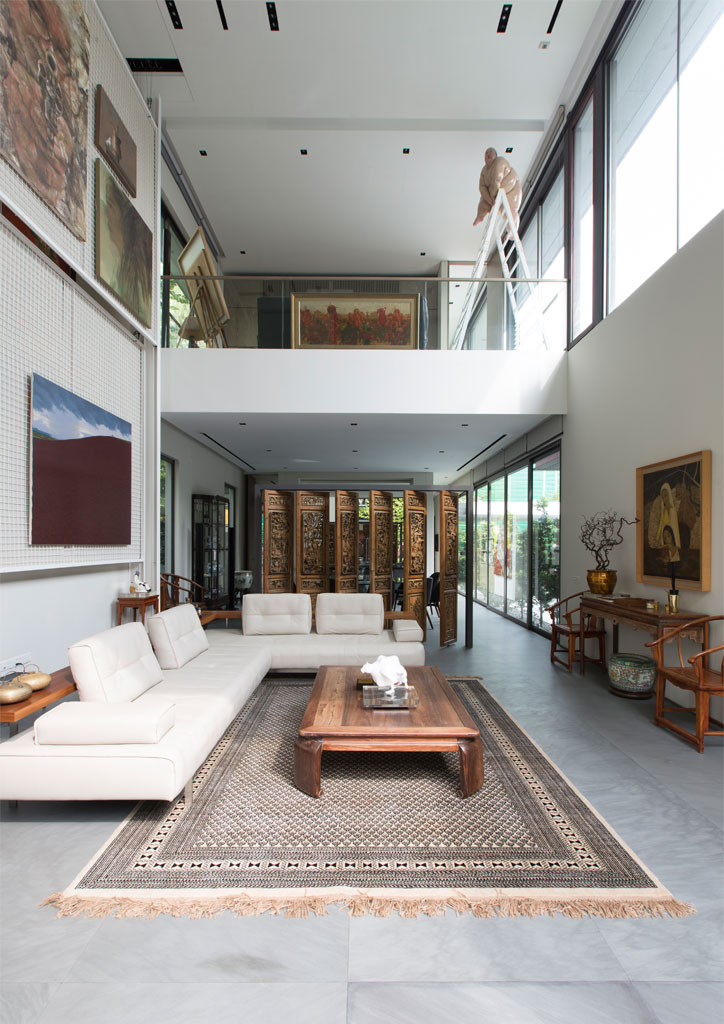
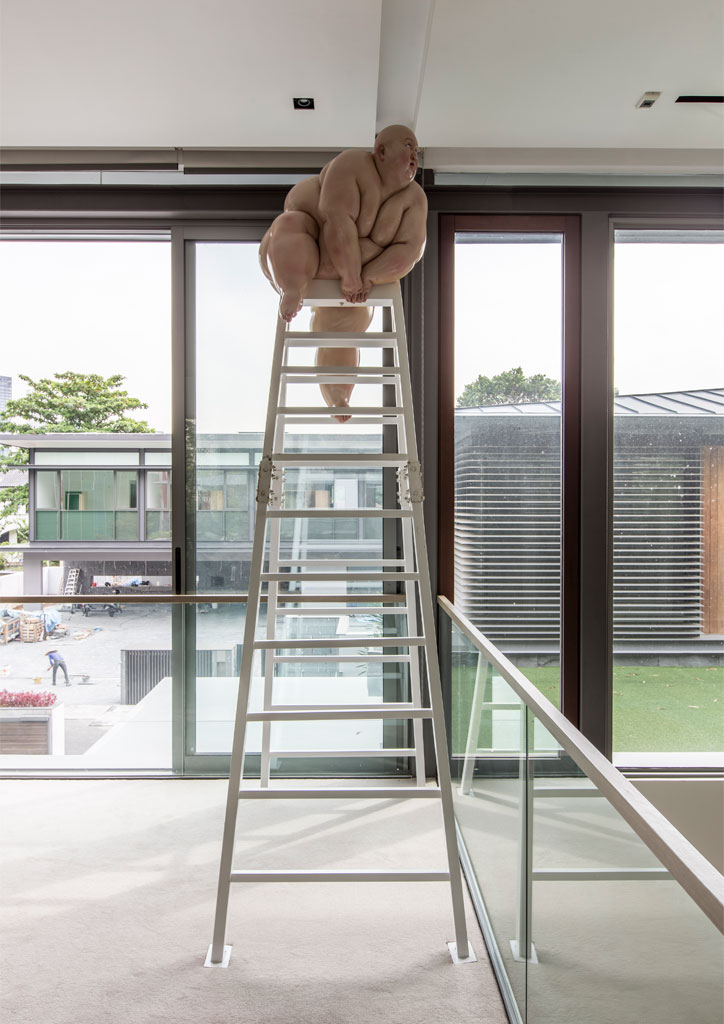
With Block A positioned at the north-eastern corner of the site, Block B is then positioned diagonally across to the south-western corner of the site. They minimally overlap with a covered linkway, which also functions as a semi-outdoor foyer. With their longer elevations oriented north-south, heat gain is minimized as their staggered placement from each other offers each house privacy whilst maximizing views and facilitating natural cross ventilation.
Landscape and a swimming pool fuse the two blocks together. Block C, clad entirely in greenery, except for a window pop-out which showcases a playful piece from the owner’s sculpture collection, with its small 36-square meter footprint, ‘disappears’ into the landscape.
READ MORE: Modernism meets Asian resort in Conrad Onglao’s C House
Art and material craft
The manner in which the site has been organized has also allowed each block to embody and very precisely meet their occupants’ needs.
With only two occupants, the owner and his wife, Block A has also become home to the family’s permanent guest: Art. Apart from regular wall space throughout the house, a double volume space and a mechanized movable wall system in the living room efficiently showcases the owner’s impressive art collection. In contrast, housing a young architect, his wife and their three young children, Block B exudes the feel of a family man’s home: homey, child-friendly, and easy-goingly comfortable.
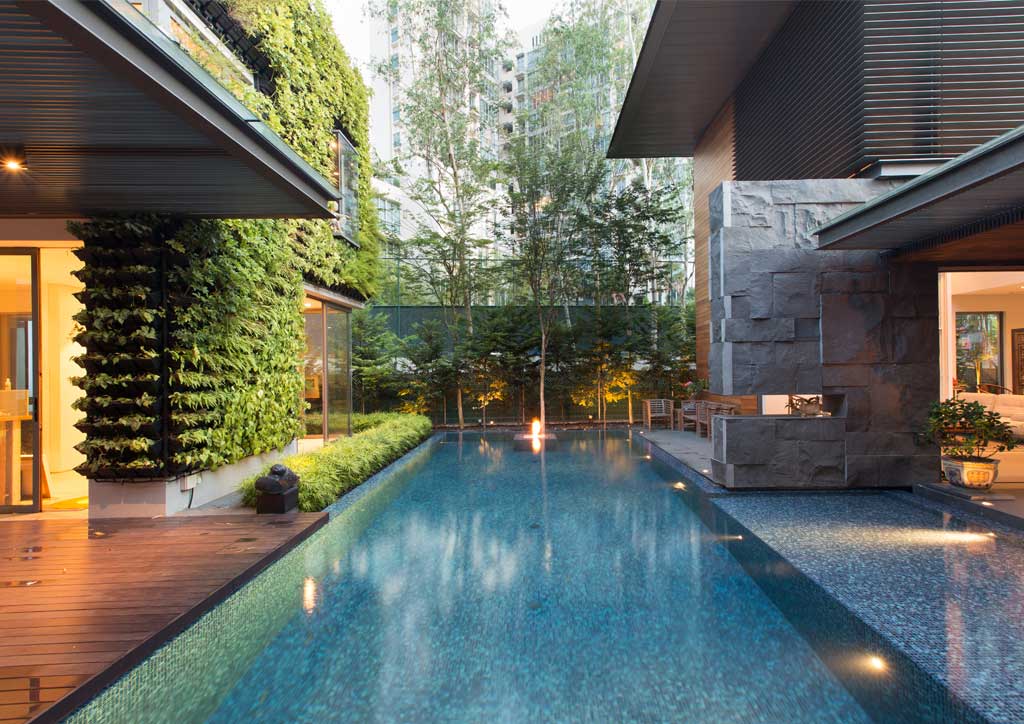
Despite the contrasting programmes and spatial characteristics of each house, cohesiveness is achieved through the consistent application of materials that transcends the programs of the individual spaces. Evidence of the application of materials treated as craft is undeniable as one moves through the house’s many different spaces. Italian travertine and limestone and a variety heat-treated Asian timbers are not only applied but also showcase their natural beauty, giving a subtle richness and character to the internal spaces.
READ MORE: Artist Charlie Co keeps his passion for art alive in his art house

Externally, a volcanic basalt lava stone from China anchors each house’s first storey, whilst above, aluminium blades provide sun shading and offer privacy to each house. The clever use of lightweight aluminium (commonly used in Singapore as construction boarding material) is also used for the houses’ roofs and eaves to give the upper levels a sense of lightness, and carefully but subtly suggest the houses’ tropical context.
Core values and family values
Today, the house evokes a ‘moved into’ atmosphere, with spaces ceasing to be posed and styled for show-and-tell visits for the family’s guests, colleagues, and the architectural press. The smells of baking cupcakes and cookies waft through both houses. Children’s books and toys and other everyday items abound, and the owner’s sculptures are being playfully moved about, cleverly greeting, surprising, and delighting. For RT+Q, it is in this every day state where their architecture’s core values are revealed and crystallized. For the owner and his three-generation family, it becomes a reflection of their values.![]()
Original articles first appeared in BluPrint Volume 2 2017. Edits were made for Bluprint online.
